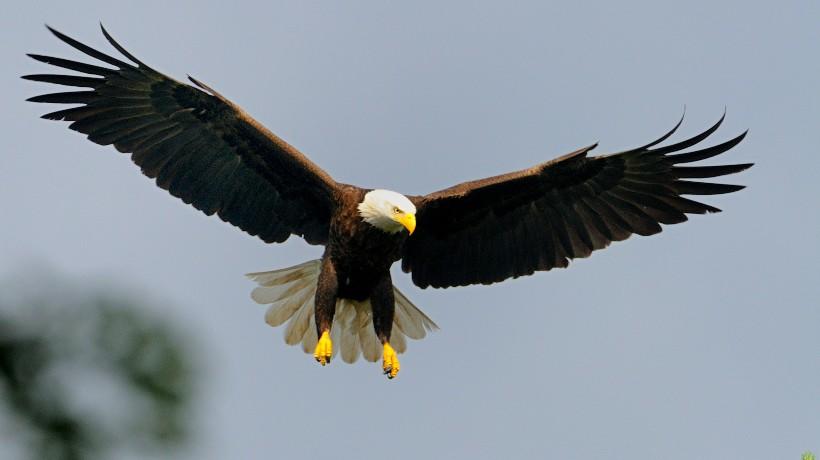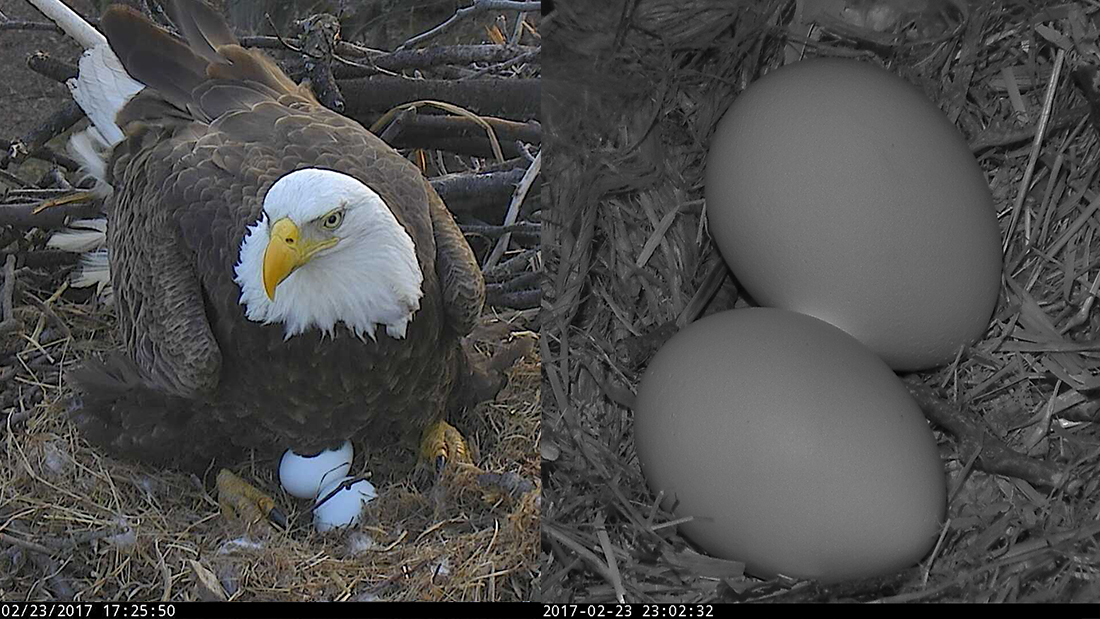1. Bald eagles are not, in fact, bald as their name suggests, but in Old English, the word for white was “balde,” thus they are named for their white heads.
/https://tf-cmsv2-smithsonianmag-media.s3.amazonaws.com/filer/0c/f4/0cf416b8-478f-4bbc-87cf-ce8c5c83062a/bald_eagle_haliaeetus_leucocephalus_in_kachemak_bay_alaska.jpg)
2. Weighing about 16 pounds with a wing span of 6.5-8 feet, bald eagles are second only to golden eagles in size. Unlike golden eagles, bald eagles both overwinter and breed in Michigan.

3. The diet of the bald eagle consists mainly of fish, but bald eagles will also hunt birds, and eat reptiles, amphibians, invertebrates, rabbits, muskrats and carrion.

4. Bald eagles often steal food from smaller birds of prey such as osprey by harassing them until the other birds drop their meals. The bald eagles then swoop in and take the food for themselves.
5. Bald eagles obtain their fully white heads and tails when they reach maturity at 4 or 5 years old.

6. They select a mate with whom they typically remain for their whole lives, unless their mate is killed, in which case they will find a new mate.

7. In the wild, bald eagles live to be around 20 years of age. In captivity, they can live up to 50 years.

8. Males will start to establish territories and build nests in tall trees to attract their mate beginning in mid-February through mid-March. Each year the pair will add to the nest, allowing a single nest to grow as large as 10 feet deep and 20 feet across.

9. The female will lay, on average, two white eggs that are about twice as large as a chicken egg. The eggs hatch after a little over a month of incubation, and by late summer, the offspring are ready to fly.

10. Bald eagle populations steadily decreased through the first half of the 1900s due to human disturbances at their nest sites, loss of habitat and human persecution. Starting in the 1950s their slow decline took a sudden, sharp and dramatic plummet towards extinction across the lower 48 states, including Michigan, because of pesticide use, especially pesticides containing DDT and PCBs. The bald eagle remained on the Michigan Endangered Species List until June of 2007. Today there are more than 800 nesting pair of bald eagles in Michigan.


